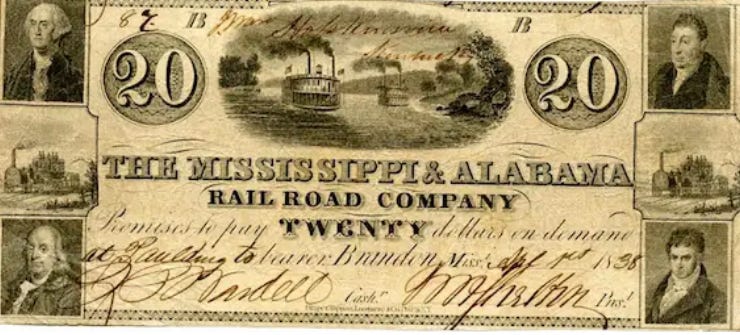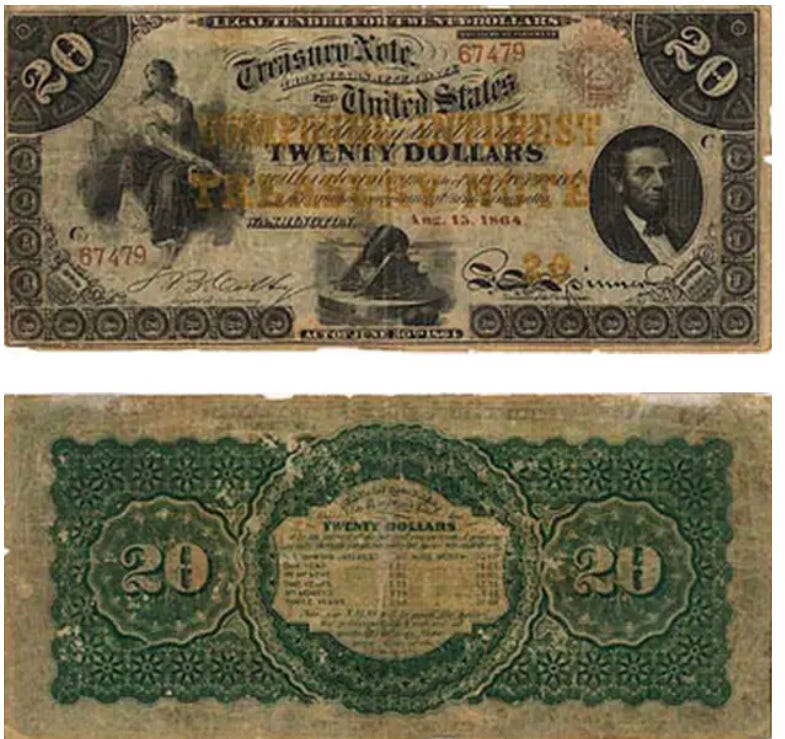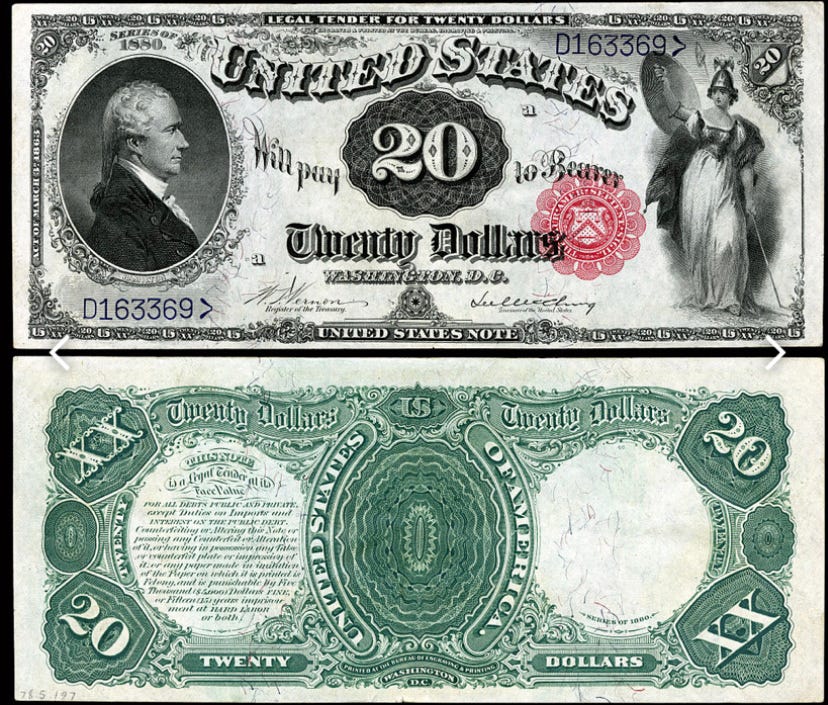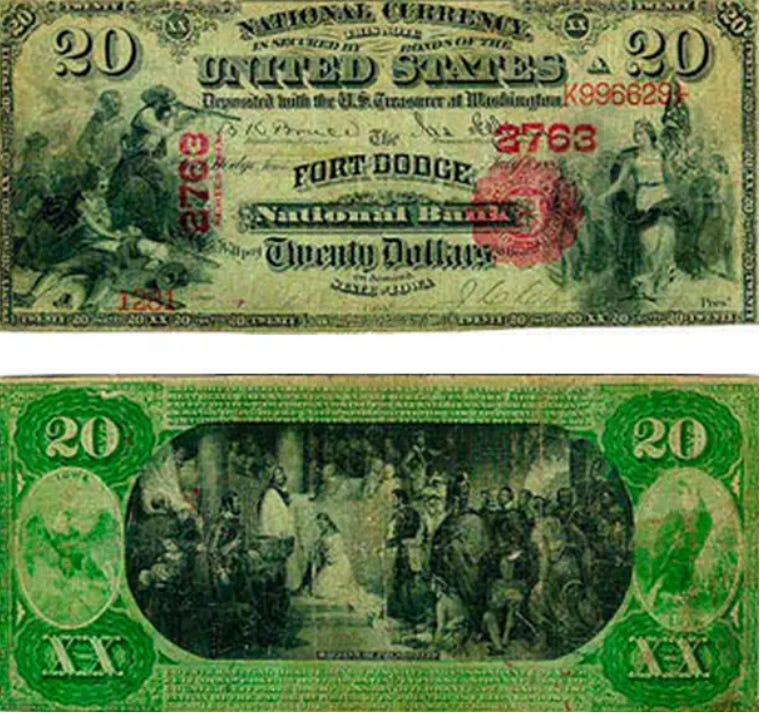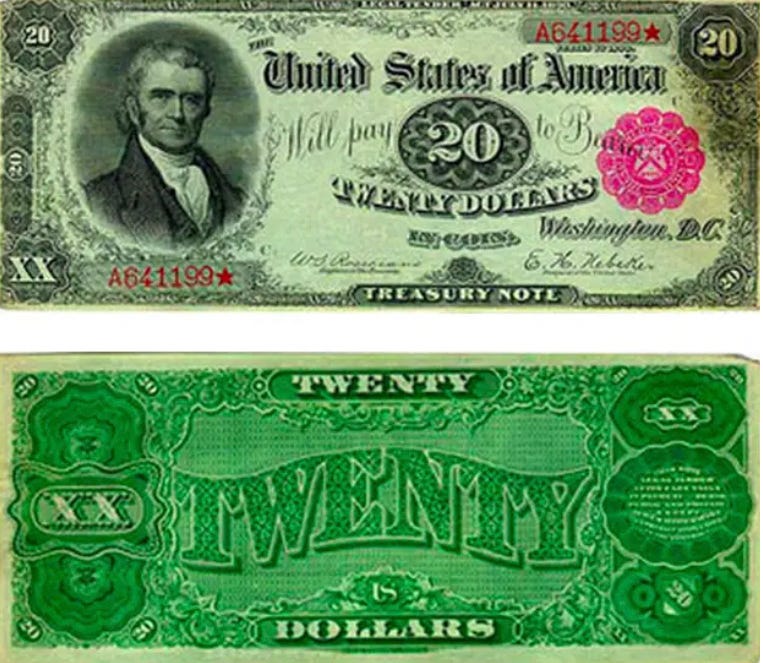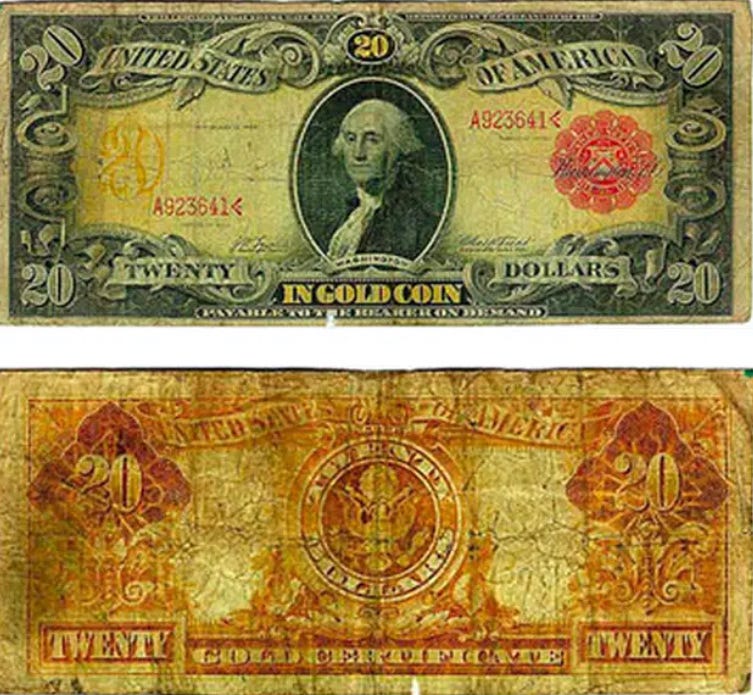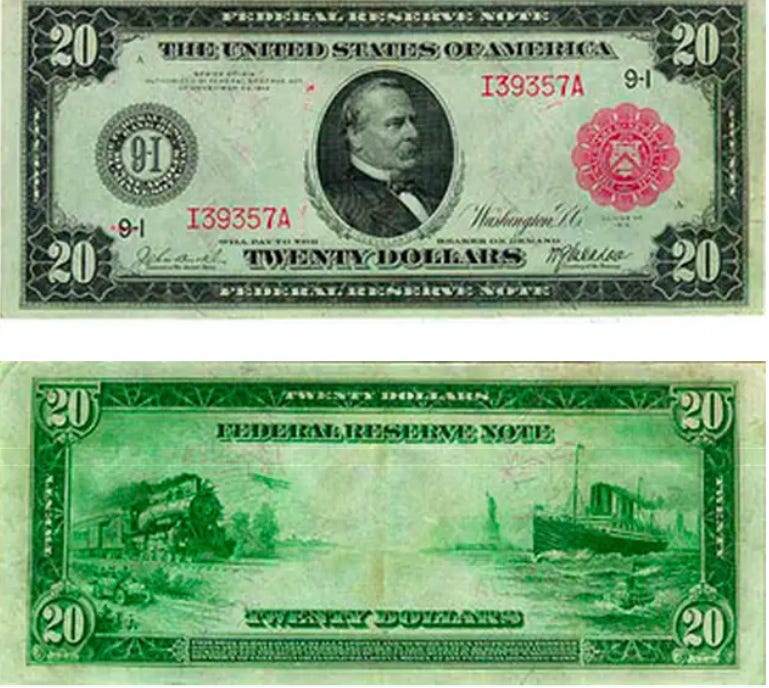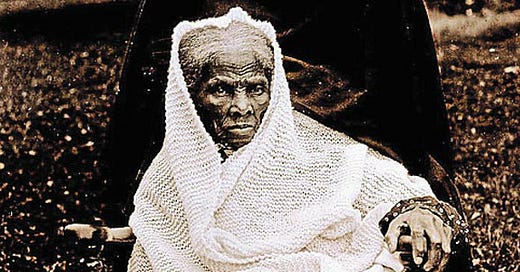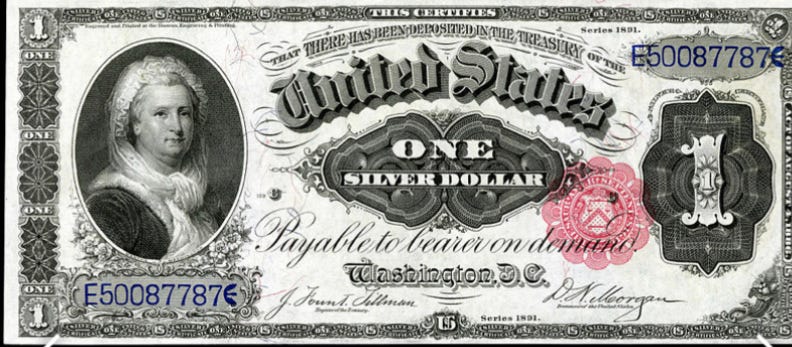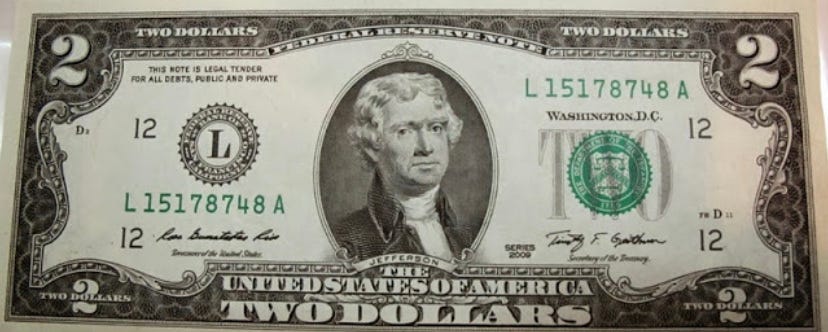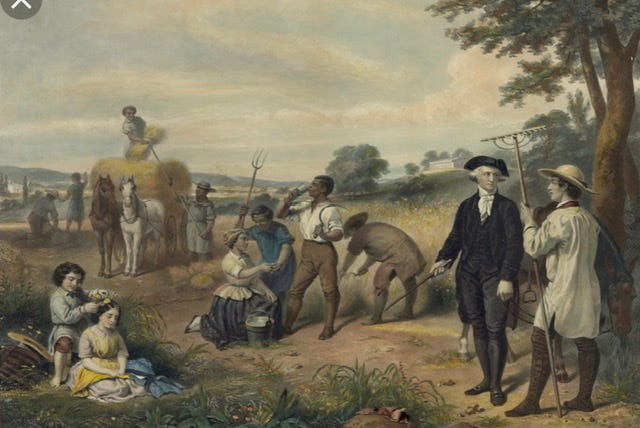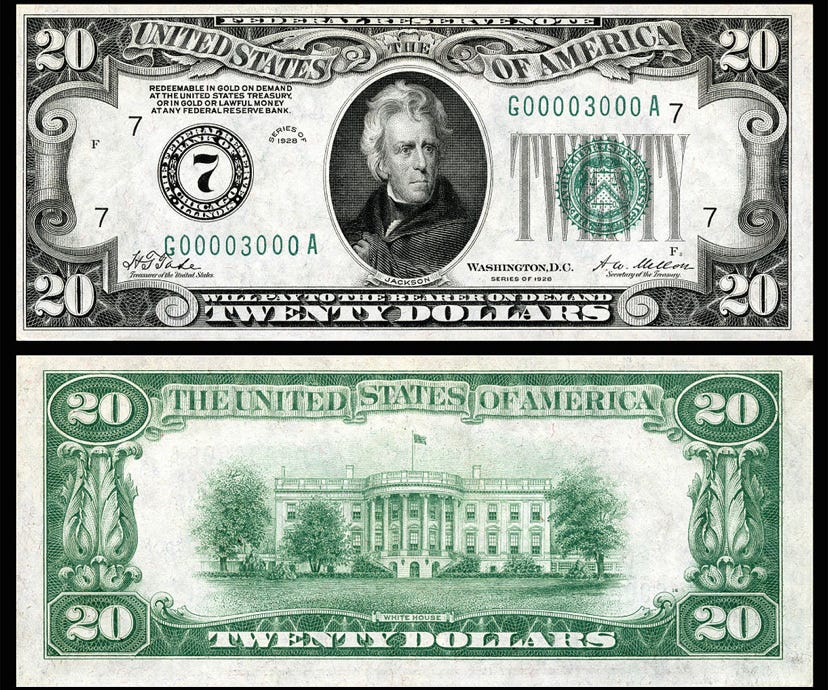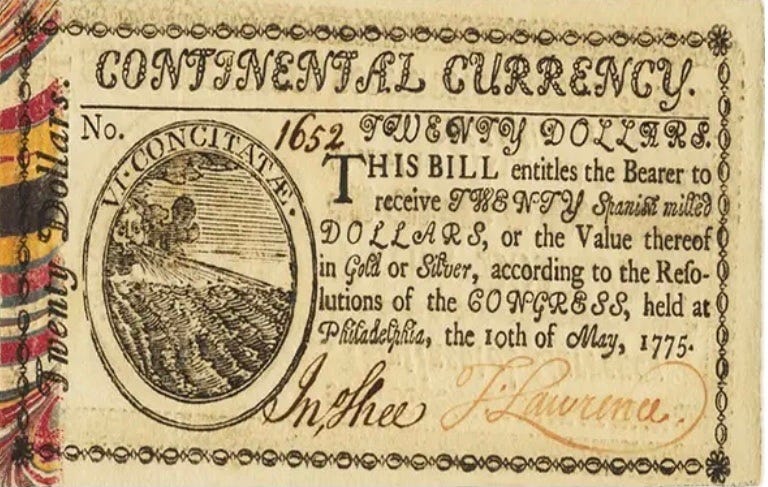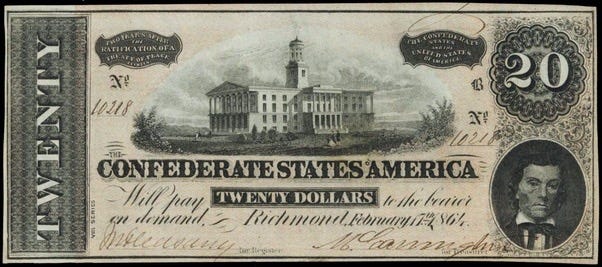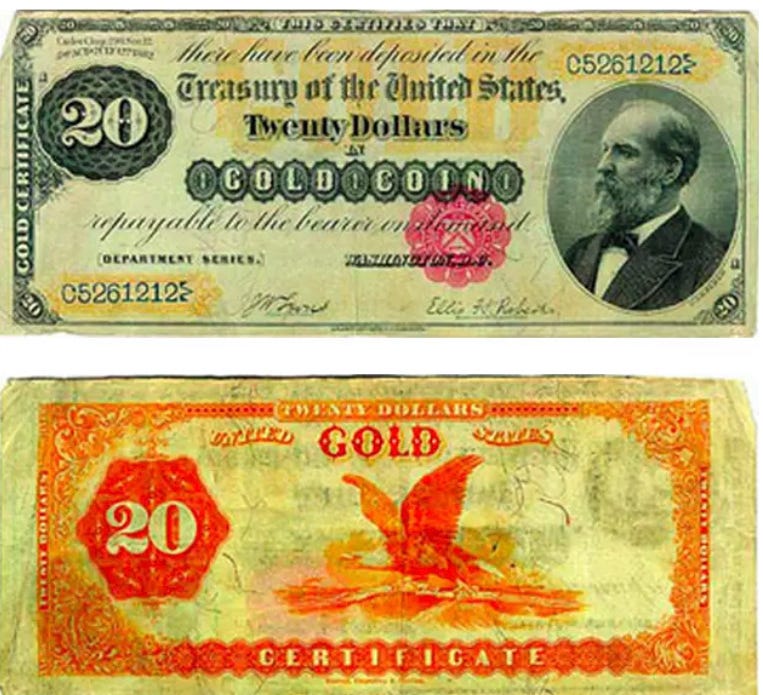Most people do not remember a world without Jackson on the $20 bill. That’s because he has been there for 93 years. The seventh president, a slaveholder, is about to be replaced by Harriet Tubman, who broke the laws of human bondage.
The subtle historical poke is not just a sign of our times. Jackson at one time owned 161 slaves and wasn’t especially nice to them. Tubman was personally responsible for the freedom of at least 60 slaves. She courageously made 19 trips back to the South and brought them along the Underground Railroad. Technically speaking, Jackson was legal and Tubman was an outlaw.
The only thing they shared in common was their future on American currency.
Jackson of course is not the only slave holder to appear on American currency. First President Washington owned slaves for 56 years. He acquired his first person at age 11. There were 317 slaves at Mount Vernon when he died in 1799. Washington owned 153, the rest were brought to the marriage by his wife. His will provided for the freedom of his 123 humans upon his death. When the former Martha Custis passed in 1802 her remaining slaves were divided between her grandchildren.
Nasty business. At least we don’t have to deal with Martha on our currency.
Third president Thomas Jefferson is another case in point. During his lifetime he owned over 600 slaves, around 400 at Monticello and another 200 on various properties. According to the Monticello website, “Jefferson wrote that he wished to ameliorate the conditions of slavery and treat people less harshly than other violent slaveholders, but he still forced people to labor for the wealth and luxury of his white family.”
This from the author of the line “all men are created equal.” Currently the Father of the Declaration of Independence appears on the rarely seen $2 bill and on our nickels.
As for Jackson, The Hermitage website also carries an adjusted tone. “We realize that slavery and racism are directly tied to each other. Andrew Jackson’s Hermitage supports racial justice. We do not stand for racism, and our desire is to bring to light the stories of the enslaved workers who lived at The Hermitage during Jackson’s time.”
Jackson’s record as a president is what got him on the twenty in the first place. Between the presidencies of Jefferson and Lincoln, his accomplishments are not without controversy. He was the only president to pay off the national debt. He ruined the Bank of the United States by depositing federal funds in state banks, setting off the Panic of 1837. His slogan was “Let the People Rule.” He refunded $37 million in taxes when he believed too much had been collected.
Before he was elected president, Jackson was a vocal and physical opponent of Native Americans, fighting in many battles including the defeat of the Muscogee or Creek tribe at the Battle of Horseshoe Bend in Georgia. His administration actively targeted the 125,000 tribe members living east of the Mississippi River in Georgia, Tennessee, Alabama, North Carolina, and Florida. This resulted in the cruel but legal land grab established by the Indian Removal Act of 1830.
The fine print allowed for the lands occupied by the Five Civilized Tribes (Cherokee, Muscogee, Choctaw, Chickasaw, and Seminole) to be “exchanged” for plots in current Oklahoma. The result forced a 20-year evacuation, now known to history as the Trail of Tears, and is one of the darkest chapters in American history. It is believed that upwards of 16,000 people died on their ways to a tenuous future.
Jackson himself first appeared on the $20 bill in 1928 amidst little if any public dissent. Harriet Tubman had passed away just fifteen years before in a home for the aged near Auburn, New York. Financially strapped for most of her life with health problems that had originated from the cruel treatment of her slave years, she had donated the land on which the home was built.
In 2016, President Obama’s Treasury secretary Jacob Lew first floated the idea of ending Jackson’s near century of residing on the $20 with the image of Tubman. In opposition, President Trump’s secretary Steven Mnuchin ceased all work on the idea, claiming a security feature was holding up the redesign. Plans to unveil the new bill in 2020 to coincide with the centennial of the women’s right to vote 19th Amendment were sidelined.
President Biden’s new Treasury secretary Janet Yellen is now accelerating those plans, according to White House press secretary Jen Psaki. It has been a long time coming.
Although Jackson has been on the twenty for almost a century, the bill itself has been changed many times. Here are some of the examples of the evolution of the twenty dollar bill:
